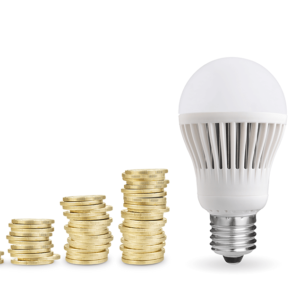The necessity of houseplants in our homes
Pollution levels on our planet are on the rise. If you live in a busy, crowded city, you encounter pollution every day. It affects our skin, our hair and most of all, the air we breathe. Pollution is not just outside, It’s in the places we call ‘work’ and ‘home’.
When you feel a little depressed, wouldn’t it be amazing to take a walk in the park surrounded by flowers and different plants; it can do wonders. That’s because when we get in touch with nature it can reduce our mental fatigue and stress while increasing relaxation and self-esteem. Even brief exposure to nature has been proven to make us more relaxed and cooperative.
There are studies that show that when the indoor plants are present, the work performance increases, also in the house, the family members’ well-being significantly improves. That is why houseplants are an essential thing for your family.
Types of the houseplants
Snake Plant

Has thin, steep leaves with unique banding that resembles the skin of a reptile. Its adaptation for surviving in a dry area makes it a suitable plant choice for anyone, anywhere. Snake plant has been proven to filter benzene.
It cleans the air better than most other indoor as it has the ability to absorb the different amounts of carbon monoxide, in addition, it emits oxygen.
Pothos

Nicknamed the “cubicle plant”, the Pathos is the easiest of all houseplants to grow. the Pothos vines can grow to over 11 feet long. The Pothos has been proven to filter benzene, formaldehyde, xylene, and toluene.
Pothos can actually remove toxins from the air around them and purify it.
Rubber Plant

A popular houseplant, it features oversized leaves that can store water in case of drought, therefore the rubber plants handle under-watering better than over-watering. They prefer bright to moderate indirect light. It improves air quality by converting carbon dioxide to oxygen.
ZZ plant

ZZ is a spectacular choice for any low-light environment. They are extremely dry-tolerant and low maintenance. In addition, the plant meaning of ZZ is prosperity and friendship, making it a perfect gift for someone you love. It grows slowly but prefers natural and bright light, also this plant is shiny on its own, so never spray it with commercials leaf shine because it clogs the pores of the plant.
Bird’s Nest Fern

The Bird’s nest fern is characterized by ripple-edged fronds. It makes for a stunning hanging plant indoor. They thrive in indirect light and a humid environment. Ferns have been proven to filter formaldehyde, xylene, and toluene.
Philodendron

Native to tropical America and adapted to low light levels, this type of plants is popular for homes. In the right indoor conditions, the Philodendron heart-shaped leaves and trailing vines can trail to over 10 feet long, making it the perfect plant for a high shelf in your house. Did we mention it has a reputation of being one of the easiest houseplants to grow? Philodendrons have been proven to filter formaldehyde that affects our nervous system causing harmful diseases like cancer.
Eight tips about your plants care
1. Choose your housePlants Based on the Light in your house

Are the plants you prefer the ones you can have? The available light in your house will help you decide. Firstly you have to check the direction of your windows and what are they facing, south-facing windows give bright light, east/west-facing windows give moderate light but north-facing windows give low light. Most houseplants need bright, indirect sunlight.
If the sun is intense through your windows, add a transparent curtain to distribute the light. Cacti and some succulents like aloe vera plants can, of course, handle brighter, direct sunlight. You don’t want to overexpose or underexpose any plant. They just need the right amount of light to live.
2. Understand Your Plant Adaptability

A busy work schedule, social life, and general carelessness can lead to unintentional plant neglect. It’s okay. Some plants can handle that kind of lifestyle. A jet setter plant will enjoy the resilience of low-maintenance but succulents, ZZ plants or Snake plants, all pretty low key, as long as they have enough light (bright and low light respectively).
If you’ve got more time, you can try a few attention-loving air plants, orchids or ferns. Like a mist for the face, an extra spritz of filtered water daily between waterings that keeps humidity levels good and balanced for these fastidious plants.
3. Less Water is More!

It’s better to under-water your plants than to overwater it. Too much water can lead to root decay. Discard your water schedule and water your plant only when it needs it. Check the plant’s soil first to make sure it’s dry at least 2 inches deep underneath the surface. If your soil looks dark in color, feels moistened, and sticks to your finger, your plant has enough water.
How often you water will also change during the year. Plants need less water in the wintertime, when they’re growing slower, the days are shorter and the sunlight is less intense. If the summer is on and the soil is drying quicker, they may need a bit more water. Wilting leaves or soil that looks pulled away from the surfaces of the planter are signs of a thirsty plant.
Always use warm water because it absorbs best. Pours water directly on the soil around the base of the plant, because as we know plants absorb water from their roots. The only exception here is Epiphytes, like air plants, who need water on their leaves as well.
Place a dish under your planter. When you water, let it soak in for a few hours, then toss any water that’s left on the dish. If no water is left over, give the soil another soak.
4. Raise the Humidity Levels

Staying realistic to your plants’ natural environment will help your plant grow indoors. Most tropical plants, ferns, and orchids prefer high humidity and light to moderate, indirect light. Mist these plants in between waterings with filtered water. During the dry months of winter, grouping similar plants together help you to create a more humid climate. A humidifier can help too and it’s great for humans. On the other hand, most desert inhabitants, like cacti, prefer dry air and bright, direct light with no shadow at all. They definitely don’t need to be drizzled and don’t care for humidity all that much.
5. Try to reduce the usage of the Fertilizer

It’s okay to skip the fertilizer. Using a lot of fertilizers can do more harm than good. Houseplants aren’t needed fertilizer as often as outdoor plants do. If you do choose to fertilize your plant, it’s best to do so during the growing season (early spring to early fall). Most store-bought fertilizers should be diluted with water before using it.
If you have had your plant for at least a year, you can fertilize it once during the whole year. It’s preferred to use an all-purpose fertilizer.
6. Show your plant extra attention

You and your plant need time to set a co-existing. Show your plant a little extra attention. Observing your plant will tell you when to water and when to not if the temperature is too high or too low. Plus for sure plants are so pleasing to look at.
7. Don’t Be Scared to change

A common mistake, change does not significantly mean putting your plant in a new planter, changing the plant’s soil. New plants should be noticed at some point and given fresh soil, as they are not intended to live in the plastic containers that they are usually sold in. Choose a planter only 1 to 3 inches larger than its current container because your plant will swim in the soil if you let it in a large container, which may lead you to overwater. Keep it tight.
8. Let it Flow

When you move your plant to a new, larger planter, whether it’s terra cotta, ceramic, or fiberglass, make sure it has a hole at the bottom. This will prevent overwatering as any excess water will have a place to flow. Get a saucer or platter and place it below the planter to avoid a wet floor.






